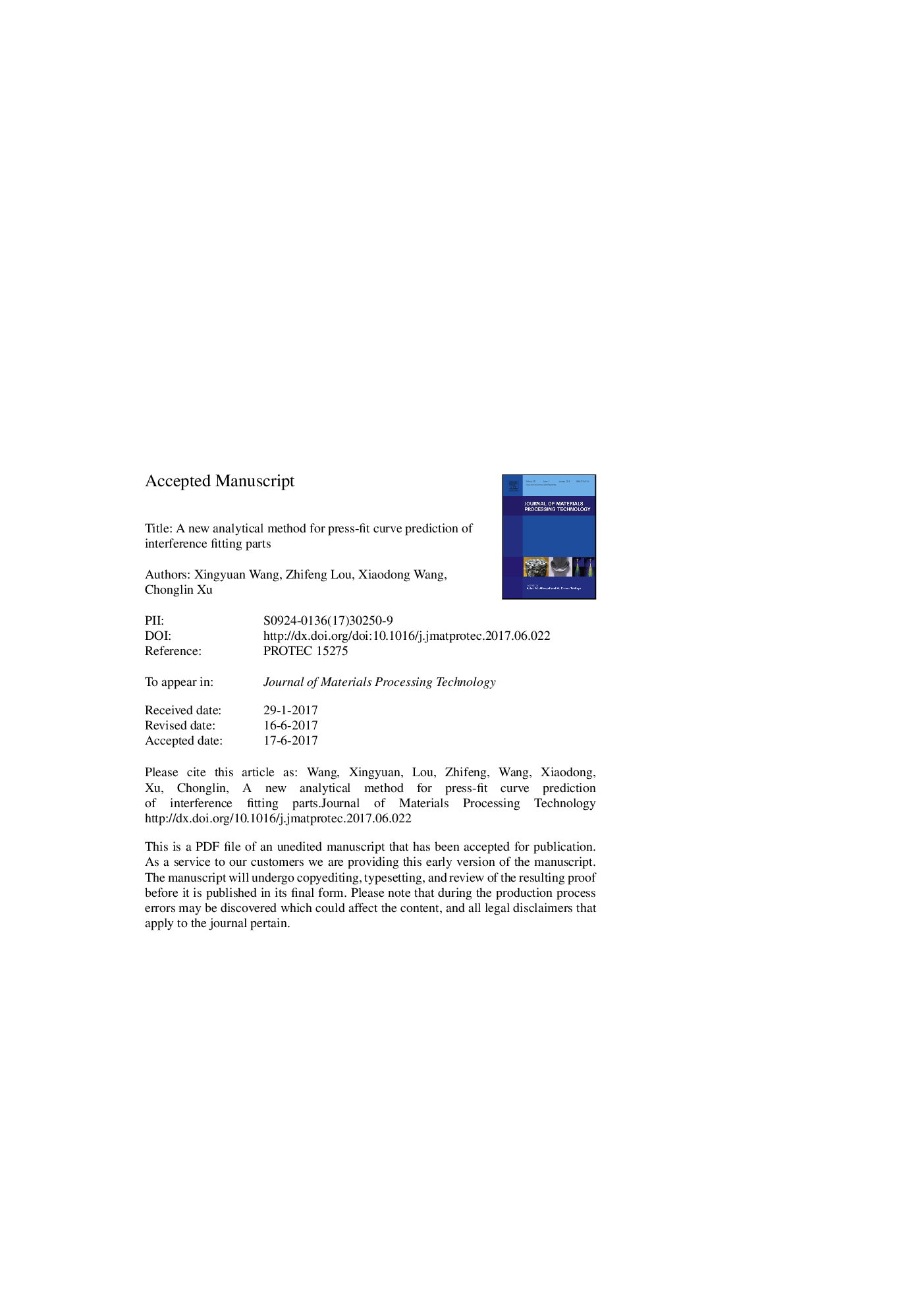| Article ID | Journal | Published Year | Pages | File Type |
|---|---|---|---|---|
| 5017660 | Journal of Materials Processing Technology | 2017 | 16 Pages |
Abstract
Press-fit assembly is one of the traditional methods for assembly of interference fitting parts. But the connection quality cannot be obtained directly from this method. At present, the press-fit curve is employed for quality estimation, and thick-walled cylinder theory (TCT) is used for standard press-fit curve prediction. However, the prediction results have a large relative error which may reach to larger than 18% for neglecting the influence of non-contact regions. This paper aims to build an accurate analytical method to predict the press-fit curve under the linear elastic hypothesis. The finite element method (FEM) was used to analyze the influence of non-contact regions, and the results show that the non-contact regions generate a constant resistant force in the press-fit process. To establish the analytical method, a simplified model was proposed. The calculation method of resistant force was deduced based on the simplified model, and the analytical method was established based on both of TCT and the resistant force calculation method. The analytical results were compared with numerical results and validated by experimental results. The results show that the new analytical method can predict the press-fit curve accurately, and it is more efficient than FEM in design of interference fitting parts.
Keywords
Related Topics
Physical Sciences and Engineering
Engineering
Industrial and Manufacturing Engineering
Authors
Xingyuan Wang, Zhifeng Lou, Xiaodong Wang, Chonglin Xu,
